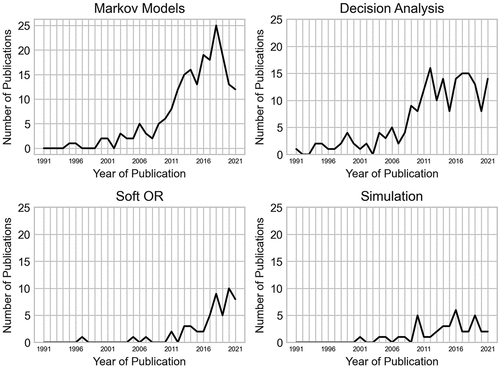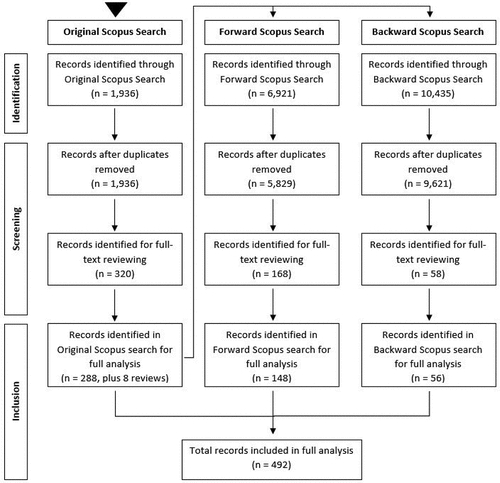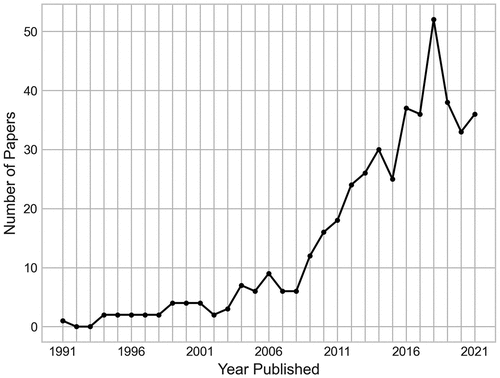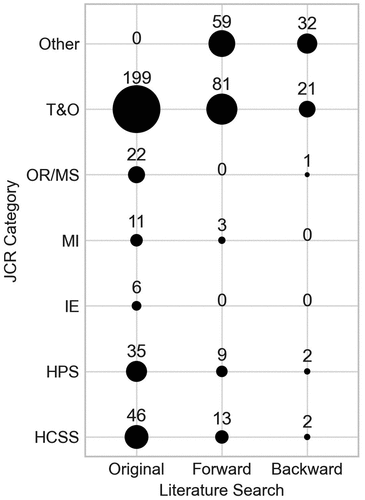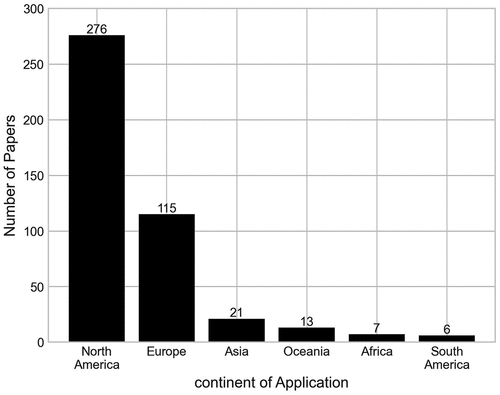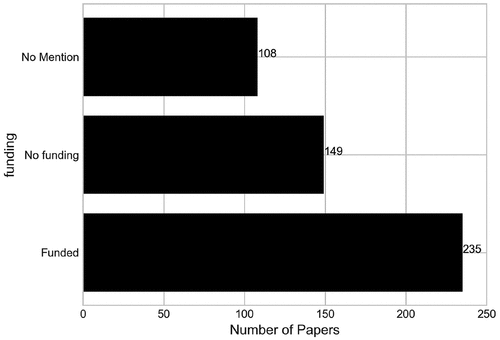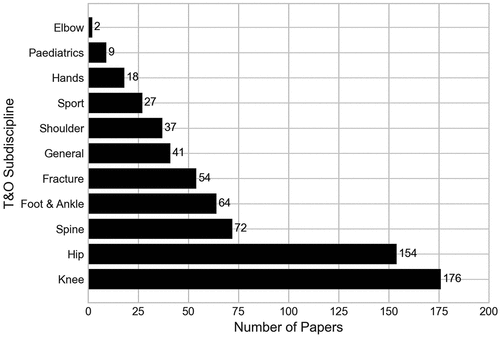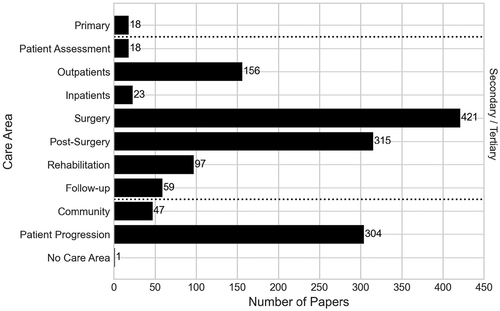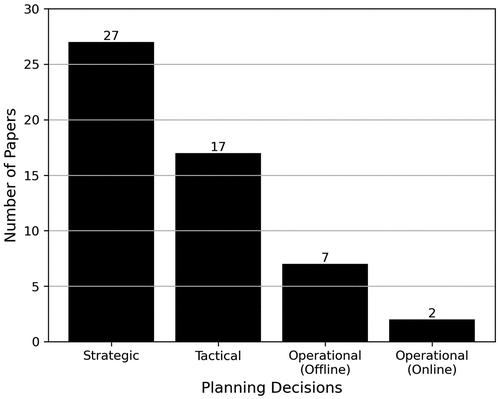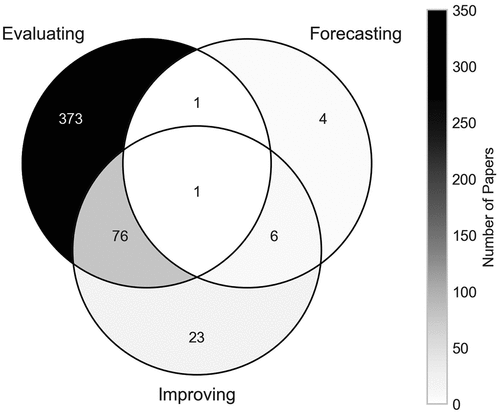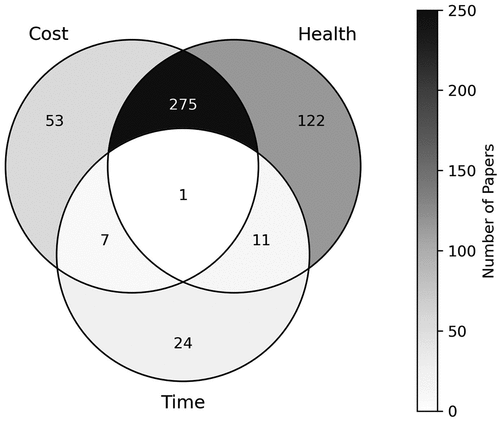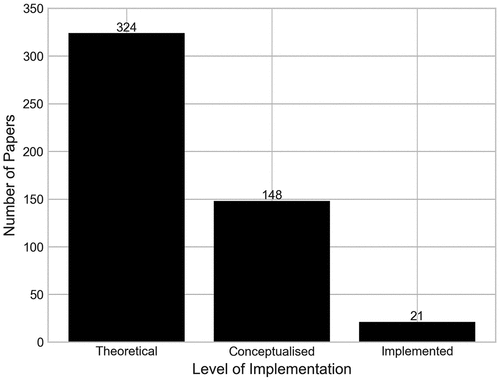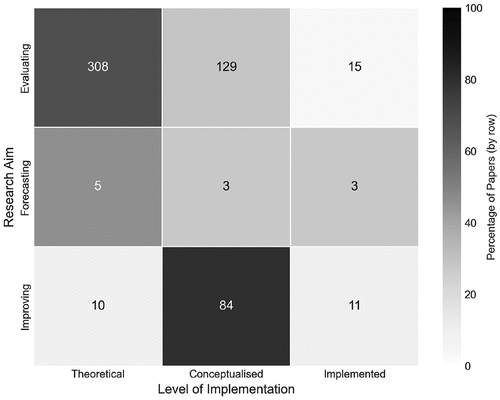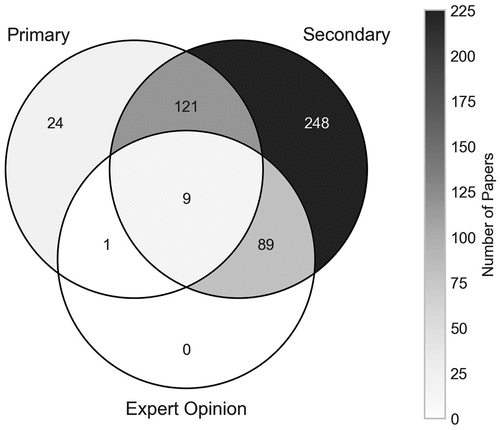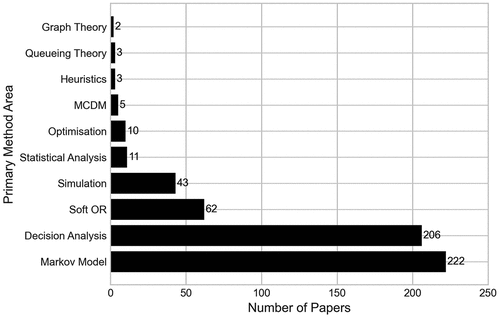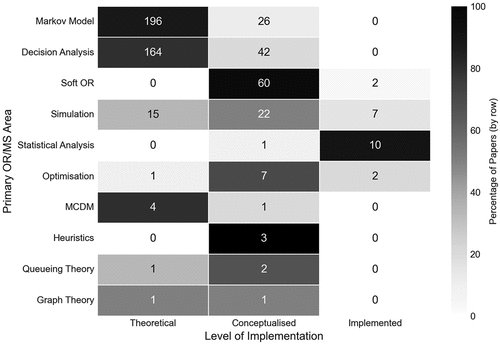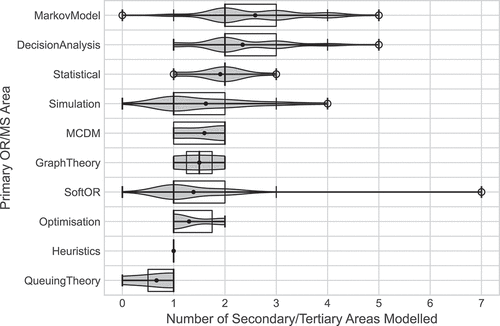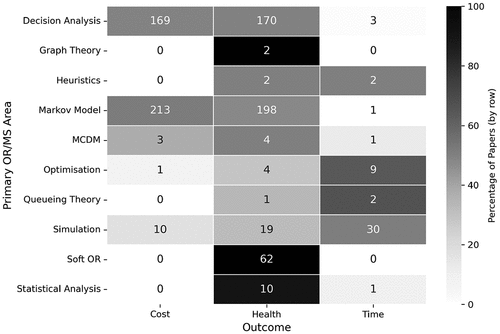Figures & data
Figure 3. Number of papers by their JCR category. Papers with an ISSN not within any of the six JCR categories have been classified within ‘other’.
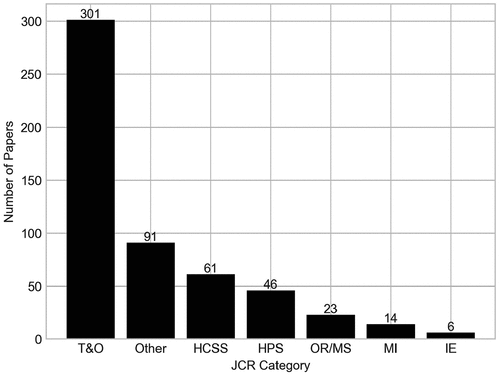
Figure 9. Number of papers by the number of parts of the secondary/tertiary pathway that they have modelled.
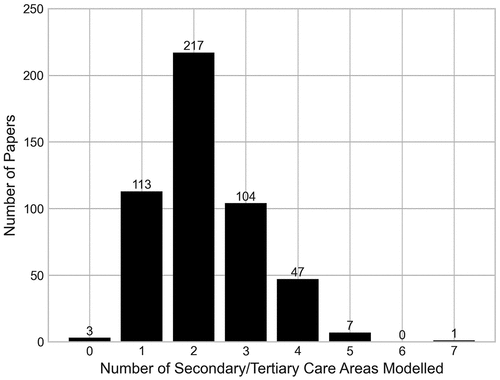
Table 1. Number of papers by their JCR category and planning decision level.
Table 2. Number of papers by their level of implementation and how the data was sourced.
Table 3. Breakdown of papers by their primary OR/MS area, as well as the frequency of methods used within each OR/MS area. It should be noted that some papers applied more than one primary OR/MS method in their paper.
Figure 18. Number of papers by their year published for the four most applied OR/MS areas (Markov models, decision analysis, soft OR, simulation).
